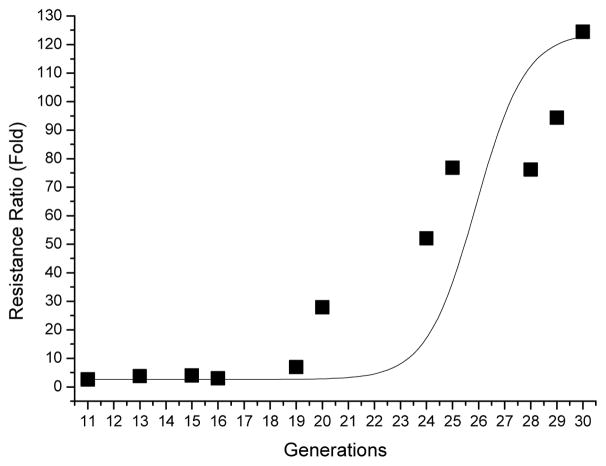Figure 1.
Aedes aegypti developed a high level of Cry11Aa resistance after twenty generations. Early fourth-instar larvae were selected at the LC90 concentration, except for generations 17, 22 and 26 that were not selected to maintain a health colony. Resistance ratios were obtained by comparing the LC50 values of the resistant strain to that obtained with susceptible larvae (WT). Bioassays showed the G30 larvae had a 124-fold resistant ratio.

